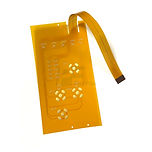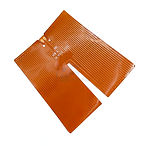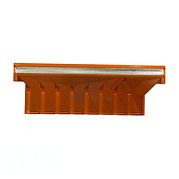
Applications of Flex PCB in Other Industries
As industries push the boundaries of innovation and miniaturization, the demand for reliable, lightweight, and space-efficient electronic interconnects has surged—driving the widespread adoption of flexible circuit technology. No longer confined to traditional applications, flexible printed circuits are now essential components in a variety of advanced systems across sectors such as aerospace, robotics, energy, defense, and smart infrastructure. The ongoing evolution of flex PCB technology enables engineers and designers to break free from rigid design constraints, unlocking new possibilities for performance, form factor, and functionality in complex environments.
Industrial Control Flexible Circuit Board


Industrial equipment using flexible circuit board achieves more accurate, easier-to-read measurements and faster operations. The application of flexible circuits in industrial control design not only improves system reliability and performance, but also promotes the miniaturization, lightweight and high integration of equipment, providing strong support for industrial automation and intelligent manufacturing.
Flexible heaters are usually single-layer flexible circuits that utilize copper or resistance alloys, such as chromium nickel iron alloy and copper nickel alloy, to form a conductive path. When current passes through a high resistance conductor, heat is generated. Select dielectric materials based on working temperature and heater power density. Select the width and thickness of the conductor based on the power supply voltage to provide the required resistance value.

_JPG.jpg)
Flexible Circuit used in Massagers
Flexible circuits are commonly used to connect and control various sensors, massage nodes, heaters, and massage programs of massage machines, as well as display screens or control panels that support massage programs and functions.

Aerospace equipment needs to operate in extreme environments, including high and low temperatures, strong vibrations, and radiation. Flexible circuit boards, due to their excellent elasticity and heat resistance, can maintain stable electrical performance under these harsh conditions, ensuring the reliable operation of the system
Reducing equipment weight is also an important design goal in the aerospace field. Flexible circuits are lighter than traditional rigid circuit boards, which can significantly reduce the overall weight of the equipment and help improve fuel efficiency and load capacity. Implementing high-density circuit design to save space is also extremely important within limited-space aerospace spacecraft. Customized Flex PCBs such as multi-layer flexible circuits, thick copper flexible circuits, and high-frequency flexible circuits can meet the complex needs of aerospace applications.


